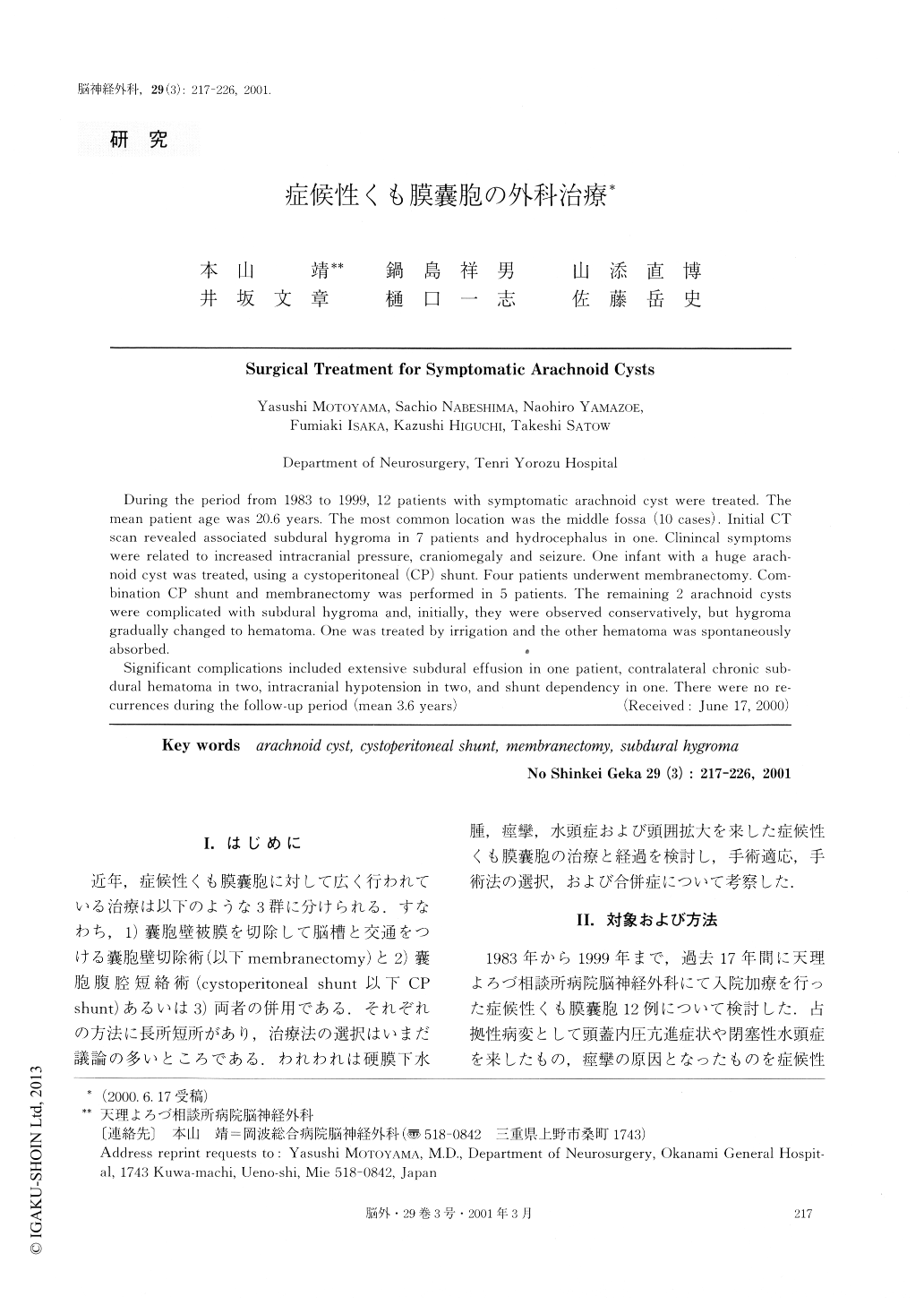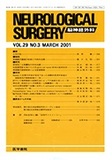Japanese
English
- 有料閲覧
- Abstract 文献概要
- 1ページ目 Look Inside
I.はじめに
近年,症候性くも膜嚢胞に対して広く行われている治療は以下のような3群に分けられる.すなわち,1)嚢胞壁被膜を切除して脳槽と交通をつける嚢胞壁切除術(以下membranectomy)と2)嚢胞腹腔短絡術(cystoperitoneal shunt以下CPshunt)あるいは3)両者の併用である.それぞれの方法に長所短所があり,治療法の選択はいまだ議論の多いところである.われわれは硬膜下水腫,痙攣,水頭症および頭囲拡大を来した症候性くも膜嚢胞の治療と経過を検討し,手術適応,手術法の選択,および合併症について考察した.
During the period from 1983 to 1999, 12 patients with symptomatic arachnoid cyst were treated. Themean patient age was 20.6 years. The most common location was the middle fossa (10 cases). Initial CTscan revealed associated subdural hygroma in 7 patients and hydrocephalus in one. Clinincal symptomswere related to increased intracranial pressure, craniomegaly and seizure. One infant with a huge arach-noid cyst was treated, using a cystoperitoneal (CP) shunt. Four patients underwent membranectomy. Com-bination CP shunt and membranectomy was performed in 5 patients. The remaining 2 arachnoid cystswere complicated with subdural hygroma and, initially, they were observed conservatively, but hygromagradually changed to hematoma. One was treated by irrigation and the other hematoma was spontaneouslyabsorbed.
Significant complications included extensive subdural effusion in one patient, contralateral chronic sub-dural in two, intracranial hypotension in two, and shunt dependency in one. There were no re-currences during the follow-up period (mean 3.6 years)

Copyright © 2001, Igaku-Shoin Ltd. All rights reserved.


